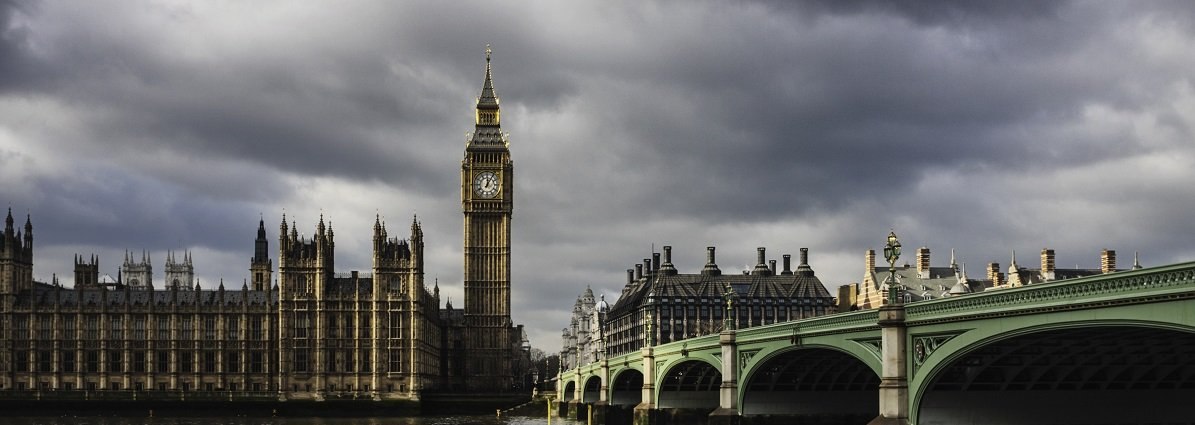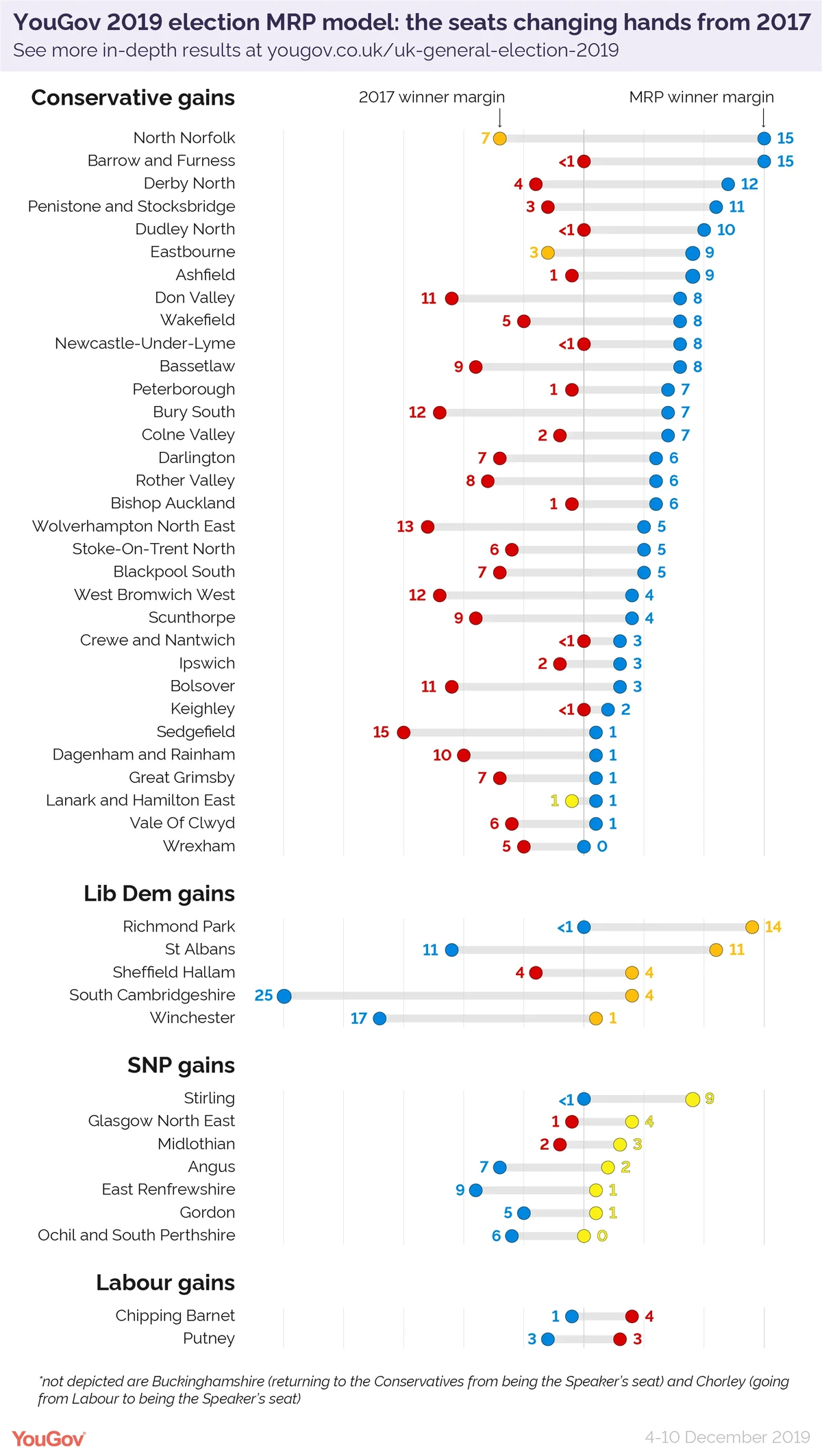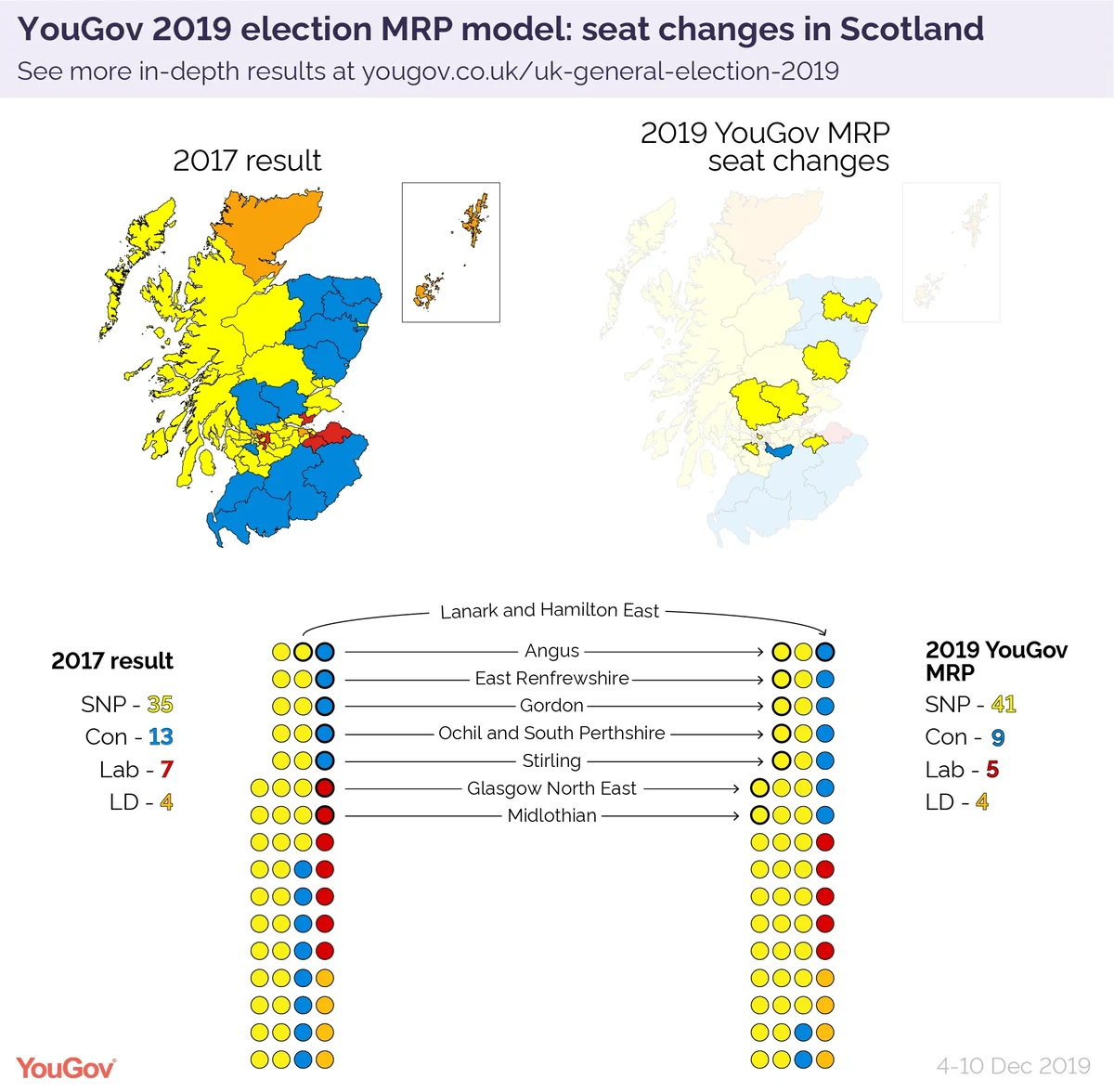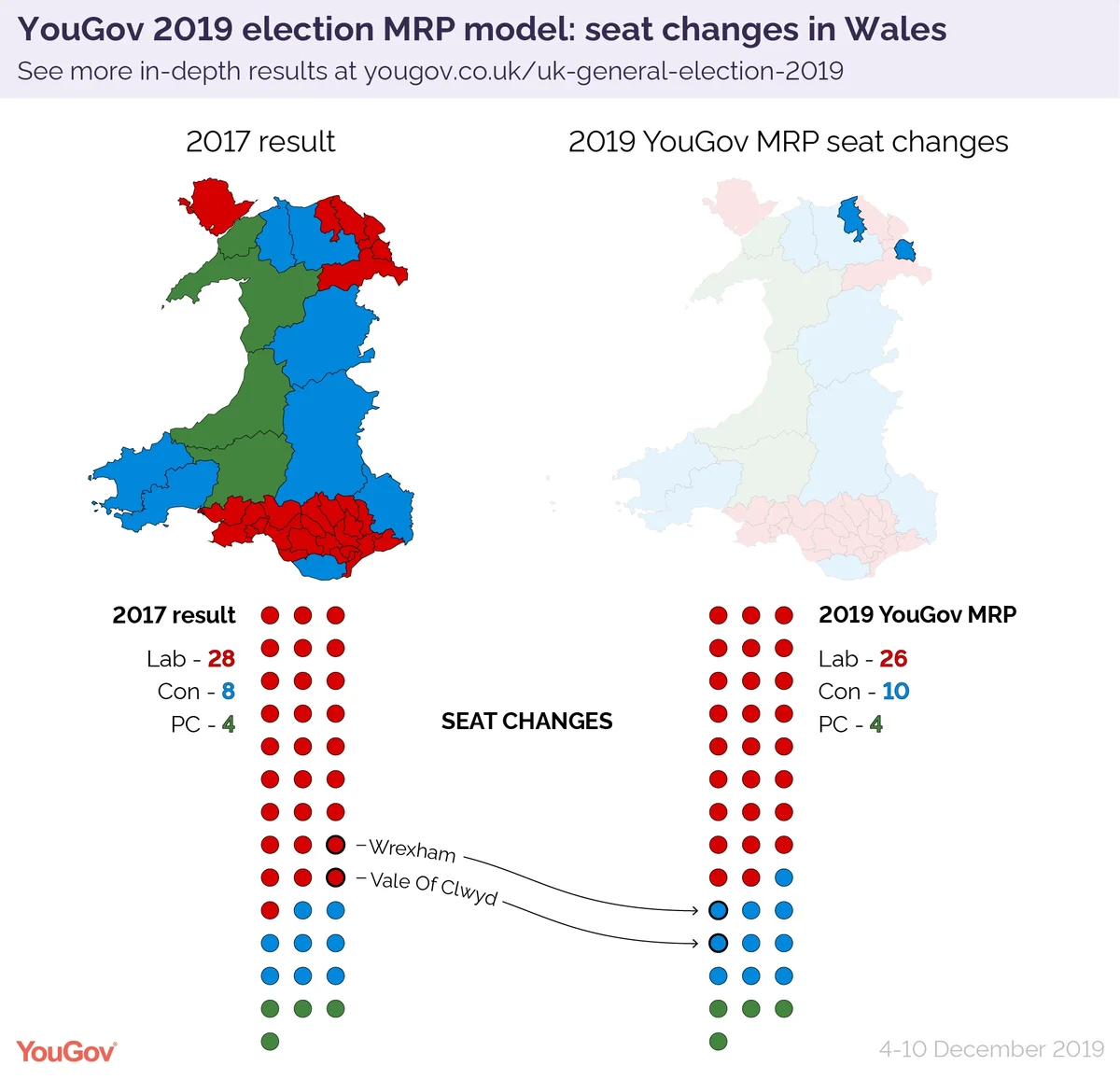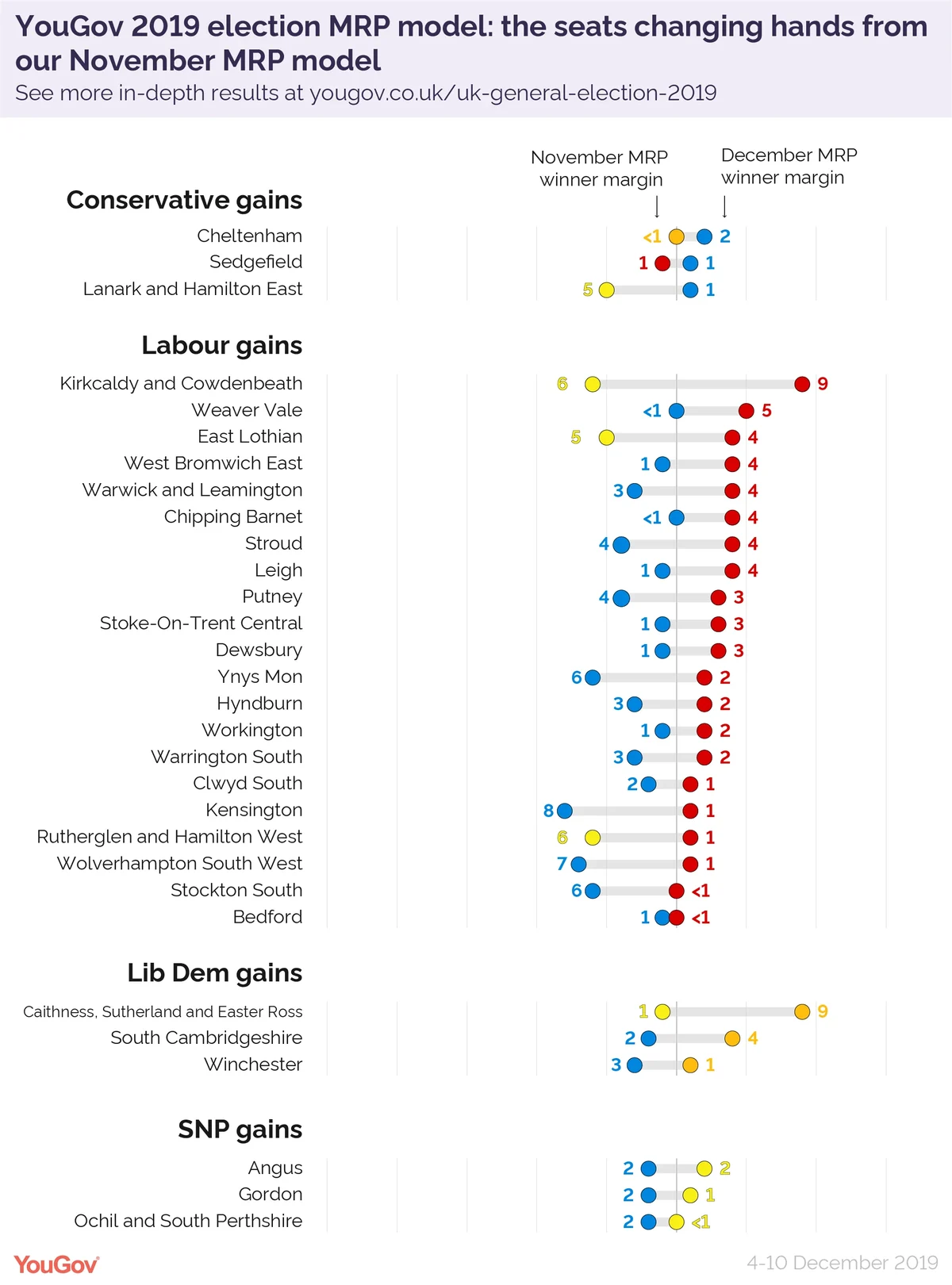After much anticipation, YouGov’s second and final MRP poll of the 2019 general election is here. The model which correctly called 93% of seats in 2017 currently shows that a small Conservative majority is likely. This is the final public polling YouGov will conduct before Thursday’s vote
If the election were held now the Tories could win 339 seats (22 more than they took in 2017) and a vote share of 43%. In terms of seats, this would be the Conservative’s best performance since 1987.
Meanwhile, Labour are set to lose 31 seats – falling from 262 in 2017 to 231 – and take 34% of the vote (a six percentage point decrease).
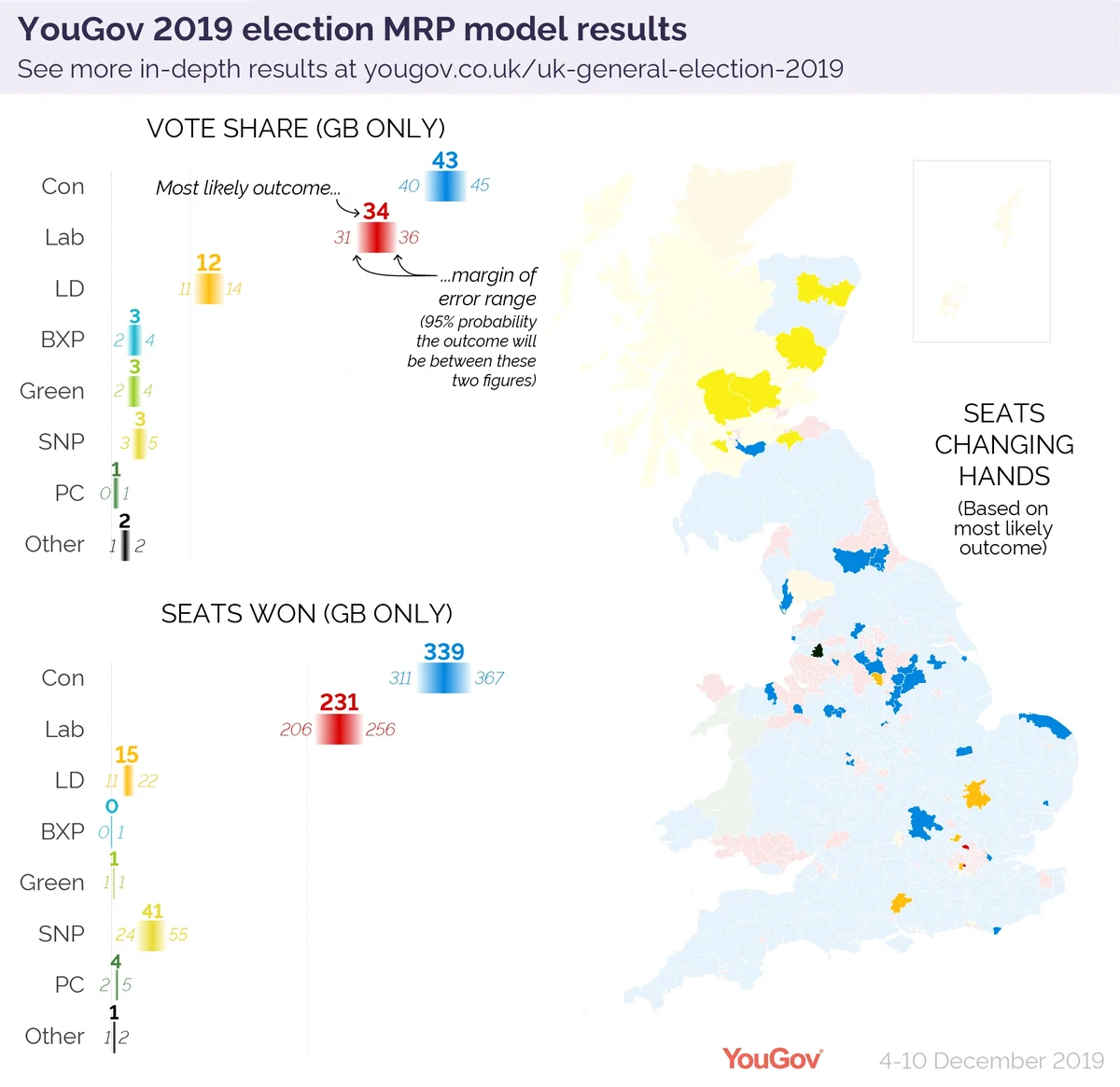
Like all predictions our model comes with some uncertainty, and the margin of error here could put the final number of Conservative seats from 311 to 367. This means that we absolutely cannot rule out the 2019 election producing a hung Parliament - nor can we rule out a larger Conservative majority.
Anthony Wells has provided a broad look at the topline results, including an outline of how the model works. But below are some of the key findings.
Labour patching over the cracks in its red wall
Most of the seats changing hands are ones Labour won in 2017, passing back to Tory control. What happens in these constituencies is key to deciding whether Boris Johnson has a majority and how large it may be.
Since our last model in November it’s clear that Labour has pulled back many of these seats. In November they were set to lose 43 to the Conservatives but this has now dropped to just 29. That change puts Labour back ahead in seats like Weaver Vale, Tom Watson’s former seat of West Bromwich East and Workington. However the Conservatives are still gaining Bishop Auckland, Dudley North and Newcastle-under-Lyme from Labour.
If we look at all the seats Labour is defending - those with a majority of 8,000 or less - we can see that this recent recovery has been strongest in Remain areas. Those constituencies which voted Remain have increased vote share by an average 6% while those which voted heavily to Leave have increased by just 2%.
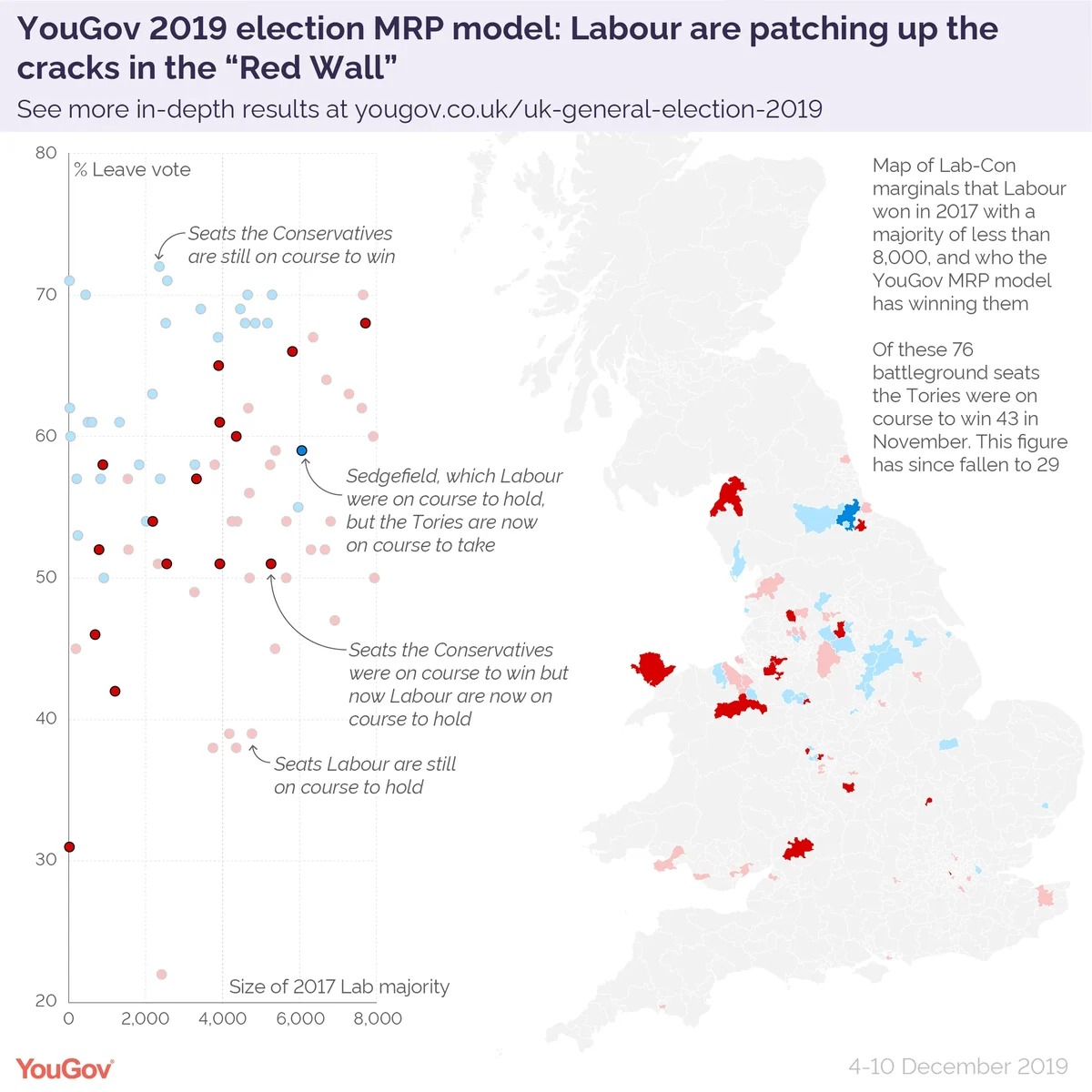
Given that Labour hasn’t noticeably increased vote share more against Remainers than Leavers on a national level, we’re likely seeing the results of an increase in tactical voting.
Potentially because of this there are also two seats further south in London which the model currently predicts Labour taking from the Tories (albeit marginally) - the heavily pro-Remain seats of Chipping Barnett and Putney.
The marginal seats that could go either way
While our model shows a 28 seat majority for the Conservatives there are a number of areas which could be incredibly tight - there are 85 seats where the leading party is ahead by five percentage points or less.
In 25 such seats the Tories are ahead and Labour is in second, meaning that the party would only need to make small gains in order to steer us towards a hung Parliament.
There are also 31 seats where Labour lead the Conservatives by a small margin. If the Tories outperform expectations in these seats they would have a much more comfortable majority.
It’s also worth noting that the margin of error varies from seat to seat. We provide upper and lower figures along with error bars in our election centre.
The average error of a seat will increase when there are specific local factors at play that are difficult to fully account for in our model. Take for example East Devon, where independent candidate Claire Wright is standing for the third time and is currently neck-and-neck with the Tory candidate. This seat has a margin of error of 10% and could actually be a comfortable Conservative or independent victory
Labour benefits from a late swing
Another interesting insight from the model is Labour’s late rise. Whilst in 2017 they started to close the gap a few weeks out from the election, and then stayed steady for the final week, this time it does seem like the gap is closing very late in the campaign.
Since the weekend the Conservative lead over Labour in our model has shrunk from 11% to 9%, which has also brought down the estimated size of the Tory majority.
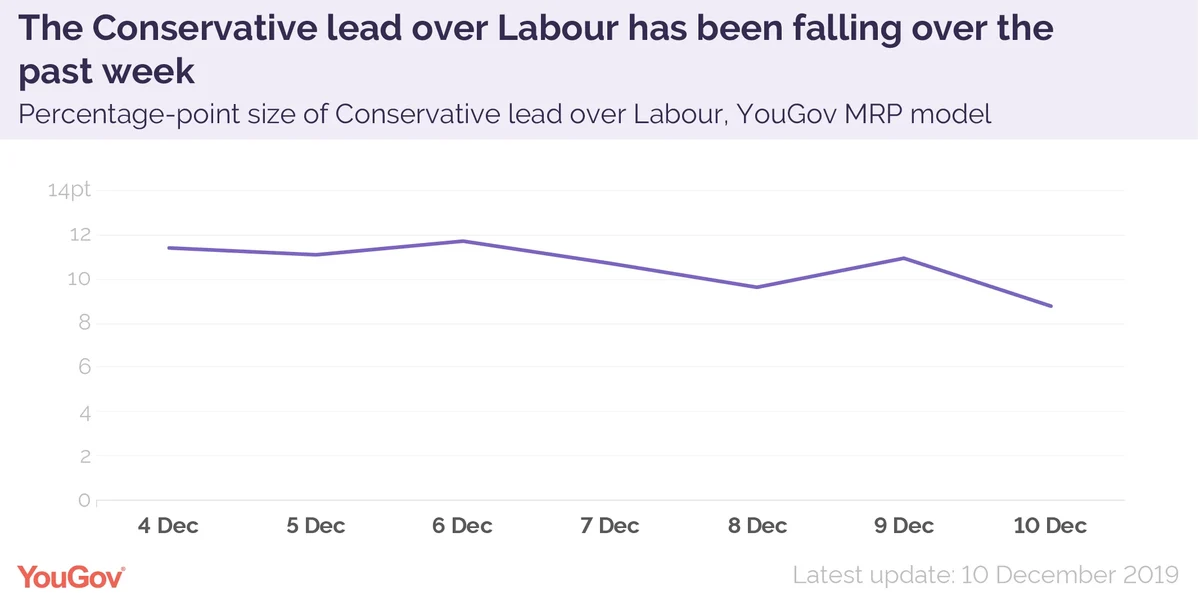
SNP profit at Labour and Tory expense
Headline seat numbers: SNP 41, Conservative 9, Labour 5, Lib Dem 4
The SNP are set to make gains in Scotland to the detriment of Labour and the Conservatives. Our model shows Labour set to lose two of their seven seats to the SNP. But all are close tussles, apart from Edinburgh South, which Labour promises to hold quite comfortably.
Of the 13 seats the Conservatives took in 2017 the SNP is set to take five. But again, all but one (Stirling, with a 9 point SNP lead) are extremely tight.
Among the 59 seats in the country there are 11 where the SNP are ahead by 5% or less, and eight where they are in second place 5% or less behind the lead party. This includes North East Fife, where the SNP beat the Lib Dems by just two votes in 2017.
Elsewhere, there's little change for the Lib Dems. They should hold all four of the seats they took in 2017 (all with a seven point or greater lead). The narrowest Lib Dem lead is in Jo Swinson's seat of East Dunbartonshire, but with the Lib Dems ahead of the SNP by seven points.
Labour struggles in north Wales
Headline seat numbers: Lab 26, Con 10, Plaid 4
The main contests in Wales look to be in the north, where all six of Labour’s seats are on track for a tight race.
According to our model two are going to the Conservatives, including Wrexham, which Labour has won at every election since 1922. Labour are still marginally ahead in four, including Ynys Mon, where there is a three-way battle between Labour, the Conservatives and Plaid Cymru.
In all six of these seats the difference between the party in first and second place is five points or less, making them too close to call. Labour’s ability to hold onto their seats in this region could dictate their success in Wales overall.
The picture for Labour is a lot better in South Wales, where the party is on course to keep all of their seats. The Conservatives are not far behind in Newport West, Gower and Bridgend, however.
Elsewhere Plaid Cymru should hold onto their four seats while the Liberal Democrats look likely to have another disappointing night in Wales, with Brecon and Radnorshire where they won in a by-election this year going back to the Conservatives.
Shock seats from 2017 swing, and potential 2019 upsets
Two years ago politicos were surprised by shock results in a handful of constituencies, including Labour taking Kensington from the Conservatives by just 20 votes. Our model shows that Labour is set to just about hold the seat with 38% of the share and an extremely narrow lead over the Conservatives on 36%. Our first round of MRP findings two weeks ago had indicated that the Conservatives could win this seat back.
Another shock from 2017 was Canterbury electing a Labour MP after a Conservative winning streaking stretching nearly a century. Not only will Labour hold Canterbury but they appear likely to double their lead to 12 points (Labour 52%, Conservative 40%) compared to our first MRP poll.
Bury North remains marginal after Labour gained it from the Conservatives in 2017. It will be a tight contest, with just two points between Labour (45%) and Conservatives (43%).
Walsall North and Mansfield, two constituencies with long Labour reigns, returned Tory MPs at the last election. Conservatives look set to comfortably win both these seats once again.
Chingford and Wood Green has been a safe Tory seat since it was created in 1997, held by former party leader Iain Duncan Smith the entire time. But with demographic changes and other local factors the comfortable advantage they had has changed. Current results now show a two-point lead for the Conservatives (47% versus Labour’s 45%).
In 2017 Dominic Raab won Esher and Walton with a majority of over 23,000. This constituency also voted Remain at the 2016 EU Referendum. The model shows that tactical voting is producing a shift towards the Lib Dems, with the party now on 44% and closing the gap on the Conservatives (46%).
Image: Getty
